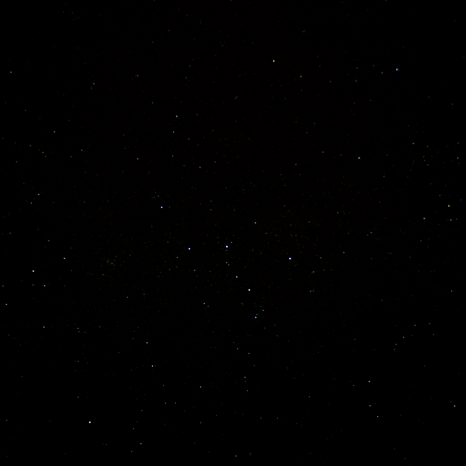

Because the named stars are concentrated in the middle of what is quite a large constellation, I have put the names in a table and labelled the stars in the picture solely with their Greek letters. Otherwise the labelling would have been very congested.
 Little seems to be known about Kasseopeia (Cassiopeia in Latin). She was the wife of the King of Ethiopia, Kepheus, about whom nothing much is known either. Kasseopeia boasted that she was more beautiful even than the Nereids (sea nymphs) and this infuriated Poseidon, the god of the sea, who was married to Amphitite who was one of the Nereids. In retribution, Poseidon sent a flood and a sea monster to destroy the land of Ethiopia. The oracle predicted that the only way the people could be saved was if Kepheus sacrificed his daughter, Andromeda, to the monster. Kepheus chained his daughter to the rocks, there to await her fate, but fortunately Perseus flew past on his winged sandals and fell in love with her. He killed the monster by attacking it from above and married Andromeda who bore him many children. After their death they were immortalised in the sky along with Kepheus (Cepheus) and Kasseopeia (Cassiopeia) and even the sea monster, Cetus. Cassiopeia is depicted in the familiar W asterism as seated on her throne but, by being circumpolar (from anywhere north of the tropic of cancer), she spends half her time upside down as a lesson in humility.
Little seems to be known about Kasseopeia (Cassiopeia in Latin). She was the wife of the King of Ethiopia, Kepheus, about whom nothing much is known either. Kasseopeia boasted that she was more beautiful even than the Nereids (sea nymphs) and this infuriated Poseidon, the god of the sea, who was married to Amphitite who was one of the Nereids. In retribution, Poseidon sent a flood and a sea monster to destroy the land of Ethiopia. The oracle predicted that the only way the people could be saved was if Kepheus sacrificed his daughter, Andromeda, to the monster. Kepheus chained his daughter to the rocks, there to await her fate, but fortunately Perseus flew past on his winged sandals and fell in love with her. He killed the monster by attacking it from above and married Andromeda who bore him many children. After their death they were immortalised in the sky along with Kepheus (Cepheus) and Kasseopeia (Cassiopeia) and even the sea monster, Cetus. Cassiopeia is depicted in the familiar W asterism as seated on her throne but, by being circumpolar (from anywhere north of the tropic of cancer), she spends half her time upside down as a lesson in humility.
The constellation contains three open clusters, M52, NGC663, and NGC457, and a number of variable stars of which γ-Cassiopeiae is the most notable. It was not recorded as variable at all until about 1910 when its magnitude was given as 2.25. It then brightened slowly until 1936-7 when it brightened rapidly to magnitude 1.6, followed by a slow decline until 1940 and, since about 1950, it has hovered at around magnitude 2.2. A few other variables of this type are known now as GCAS (Gamma Cassiopeiae) stars. Cassiopeia can be a good guide to M31, the nearest spiral galaxy to our own, although M31 is actually in the next-door constellation of Andromeda. I think it unlikely that the faint dot I have labelled is in fact M31 as I don't think it is bright enough to show in my picture, but it is located somewhere close to that location. The milky way passes through Cassiopeia which perhaps can be seen faintly in the background of my picture.
The picture was taken at 00:57 on 10th October 2010 using Canon 1000D camera with a 25-second exposure at f/2.6 ISO1600, and enhanced by increasing the contrast and brightness in Photoimpact.